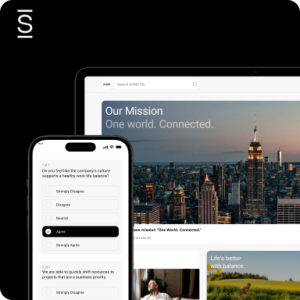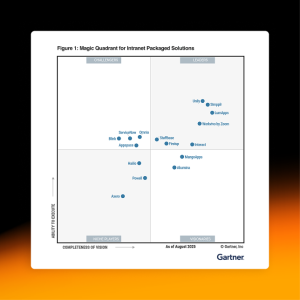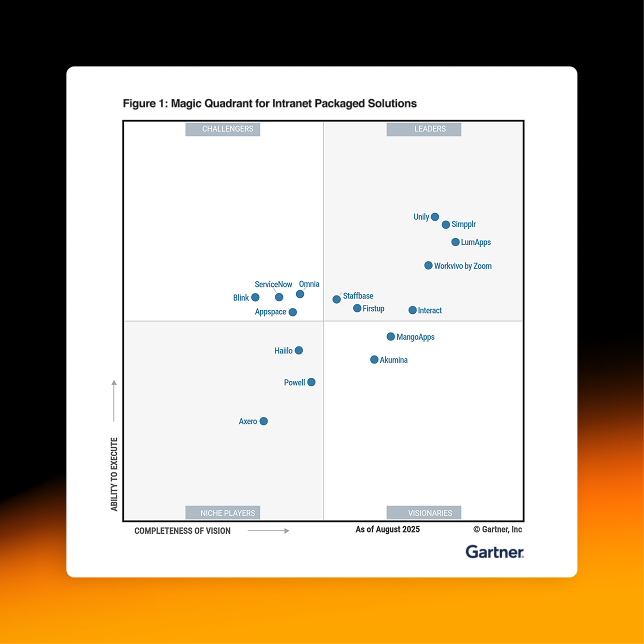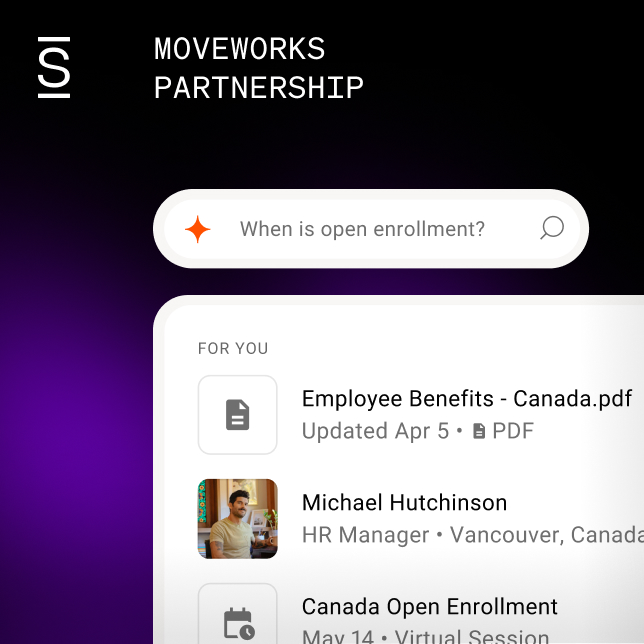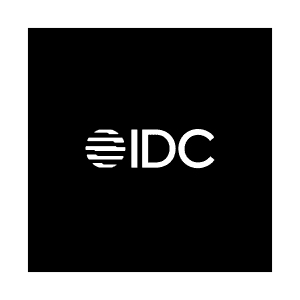Distributed workforce defined
A distributed workforce is a group of employees or workers who are spread across different locations, using cloud-based technology and communication tools to collaborate on tasks and projects. This decentralized work structure allows for flexibility, increased productivity, and cost savings for many organizations.
What Is a Distributed Workforce?
We’re going to discuss the concept of a distributed workforce, what it means, how it’s different from remote and virtual situations, and how it highlights the significance of a state-of-the-art internal communication system to hold far-flung employees together. This sounds like a contradiction in terms, so let’s take a closer look at what a distributed workforce actually is, how it benefits employees and organizations alike, what the challenges of a distributed workforce are, and best practices.
Examples of companies with distributed workforces
- The parent company of Tumblr and WordPress, Automattic, is a 100% distributed company employing remote workers only.
- DuckDuckGo, a search engine for private searches, has fully remote teams.
- Online graphic design tool, Canva, has been moving towards a fully distributed workforce since 2019.
- Technology company Dell began the transition to a fully remote workspace in 2009 and now has employees and teams distributed across more than 36 countries.
- Freelance marketplace for leading brands, Toptal is one of the largest distributed workplace companies today with employees across more than 70 countries.
Distributed vs. remote vs. virtual teams

There are distinct differences between the following types of workforces, although definitions can vary, and in many cases they overlap.
- Distributed: a fully distributed company has no office space and employees communicate online, or in person in locations chosen for purpose as and when needed.
- Remote: a remote workforce includes the concept of a hybrid workforce and is made up of employees who physically go to work at an office, plus those who work off-site, but who are nevertheless headquartered in a common location, or satellite office.
- Virtual: a virtual team undertakes 100% of communication, collaboration and interaction within a virtual space. Virtual teams can be part of a distributed or remote workforce.
Benefits of a distributed workforce
A distributed workforce environment benefits both the organization and its employees.
Better flexibility
Employees often find that flexible hours offered within a distributed workforce situation fit better with their work-life balance, given they can choose to work when or where they are able to be most productive.
Good economics
Many people find it cheaper to work from home without the costs of the daily time-consuming commute, and things like professional work wear. For employers, less or no office space is required and this cuts costs dramatically.
Higher productivity
When employees don’t have the usual distractions that go with a central office work environment, and are able to choose when, where and how they work best, their productivity will likely increase.
Wider recruitment
Organizations can recruit workers from any geographic location, thus vastly expanding the talent pool. As part of a distributed workforce, these recruits won’t have to uproot themselves and travel halfway around the world to a new location.
Challenges of a distributed workforce
Management
Effective management can be a challenge within a distributed workforce because micromanagement of employees can become a problem. It’s vital to give people autonomy in order to raise trust and confidence on both sides.
Communication
Lack of face-to-face communication can negatively affect morale and performance, especially for those people who thrive on the vibe of a physical office space. Connection is vital to combat feelings of isolation and to support collaboration, meaning careful consideration must be given to an internal communication system such as an intranet.
Productivity
People working from home tend to be productive, but if there are unexpected distractions or sudden unplanned responsibilities, workers will find it difficult to focus and get the required amount of work done.
Security
Given that a distributed workforce isn’t necessarily working on company equipment from a secure network, cybersecurity is a risk. Mobile device management is vital to prevent secure information from falling into the wrong hands.
Technology
Working from home, or in an under-developed location, has its technological challenges in that internet connections can be unreliable and email tends to be slower.
Time zone differences
If time zone differences are extreme, it can be difficult to arrange virtual team meetings, and worthwhile collaboration might suffer as a result. Misunderstandings and unwarranted delays can occur where time-lapse affects communication. However, time zones also offer an extension to the working day and after-hours support can always be found in a location where office hours still fall within the parameters of a working day.
Compliance
A distributed workforce requires real-time updates on routine business, governance, and regulatory changes to avoid complications.

Best practices for managing a distributed workforce
Given that working from home, or working from a location removed from the traditional office space of yesteryear, has become a global new norm since the Covid-19 pandemic, it’s wise to be familiar with the top best practices around distributed workforces and the employee experience they offer in a changing world. The following are worth noting:
Ensure smooth onboarding processes
A positive, efficient onboarding and assimilation process is vital for the new recruit to quickly know their teams and managers, familiarize themselves with company culture, get equipped to start work straight away, and generally feel part of the action. Regular communication with and the encouragement of feedback from new workers will also help them fit in fast.
Make communication a top priority
Good internal communication around tasks, rules, responsibilities, activities and more, drives alignment and opens a clear path for employees toward achieving individual, team and company goals.
Define roles and responsibilities
If roles and responsibilities are clearly defined, there is less chance for confusion over who does what, why and when, especially when people are working on several projects simultaneously across different teams.
Meet regularly
Too many emails and message threads can build up into an information dump that nobody looks at and important requests can be lost. Regular meetings via online platforms like Zoom or Teams are a better way to share knowledge and information, for problem-solving and decision-making around critical issues. One-to-one online meetings are good for employee engagement, combating feelings of isolation and exclusion, and letting employees know that they are cared for, appreciated and supported.
Give and take feedback
Two-way feedback and open dialogue between individuals and teams is vital to the success of a distributed workforce. If employees don’t feel their concerns are addressed, or their work is noticed, this can lead to high employee turnover rates.
Trust and respect employees
Micromanagement can make workers feel confused, inadequate and overwhelmed and this can quickly lead to employee disengagement. Team managers need to respect and trust their workers and allow autonomy within predetermined boundaries and within expectations, being clear about commitments, targets and deadlines.
Provide the right tools
A successful distributed workforce relies absolutely on the integrated tools available in the digital workplace. Having the appropriate tools, resources and support available to complete their daily tasks drives employee retention and productivity. Supplying the best tools available fosters healthy connection and collaboration, enables effective management of projects, and facilitates easy video communications for everybody from individuals to large conference groups.
Encourage team bonding
Events and activities can be offered to allow employees to connect beyond and outside work. Informal get-togethers and chats promote relationships and support isolated individuals. Have a coffee, do a quiz, and participate in an informal book club. Find out what people prefer, and when, and go with that.
Celebrate achievements
Celebrate the good results, the small wins, personal successes, important events, and significant milestones so employees feel noticed, appreciated, and included. This motivates individuals and drives a healthy company culture.
Establish boundaries
A distributed workforce doesn’t mean everyone is doing what they like without consequence. On the other extreme, it doesn’t mean everyone is available to answer questions, provide information or respond to a crisis 24/7 either. Creating boundaries for communications is essential to maintain seamless processes. Be clear about how and when communications might occur and what the appropriate response time should be.
Conclusion
The distributed workforce, touted over the past decades as the modern way forward for every industry of tomorrow, got a powerful, unexpected boost during the Covid-19 pandemic. The digital transformation age advanced abruptly when workers the world over had to switch to remote work environments more or less overnight, and as with so many new ways of getting work done in an ever-changing environment, top-quality communication systems were, and are always, key.
A well-designed internal communication strategy aligned with a modern intranet supports flexibility in a distributed workforce, saves money for both the employee and the company, drives higher productivity and enables recruitment from wider talent pools. In addition, onboarding processes can be streamlined, regular meetings easily organized to foster connection, and opportunities created to collaborate and give and take feedback. Also, with a good internal communication system, team bonding can be encouraged, appreciation shown, roles and responsibilities clearly defined, and boundaries established.
The concept of distributed workforces is now here to stay. Leading organizations must retain a competitive edge by considering the best way forward to reduce traditional office space and foster a culture of remote work. What will you do?
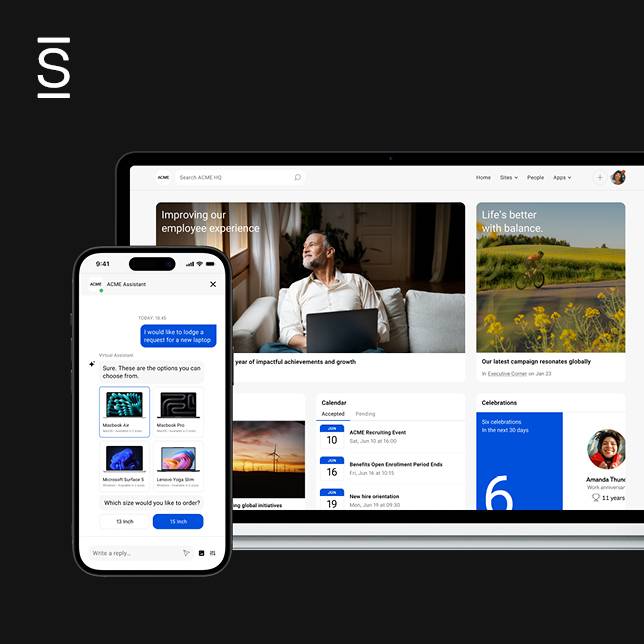
Watch a 5-minute demo
See how the Simpplr employee experience platform connects, engages and empowers your workforce.
- #1 Leader in the Gartner Magic Quadrant™
- 90%+ Employee adoption rate


